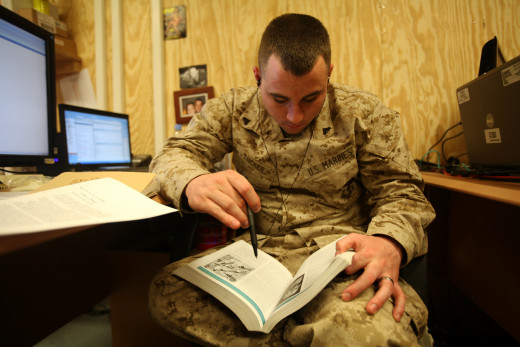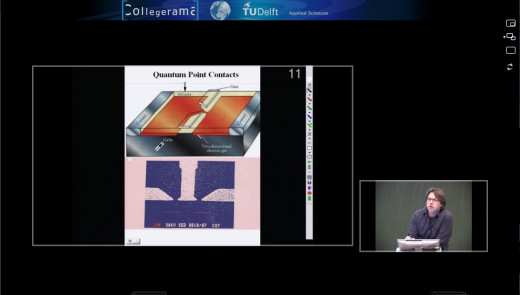Impacts of Technology on Schools and Education
Impacts of Technology on Schools and Education

Impacts of Technology on Schools and Education
Many forms of modern technologies—fax machines, laptops, gaming consoles, videotapes, flash drives, cell phones, networks, printers, scanners, tablets, computers, class management software programs, interactive whiteboards, and the internet technology—such as synchronous or asynchronous online deliveries and MOOCS (Massive Open Online Classes)—have affected today’s schools in several different ways, creating a watershed moment in educational history across the globe. By and large, these changes have been positive and served schools well. As equalizers of educational opportunities, modern technology has helped leveling the playing field for all the stakeholders: students, teachers, administrators, parents, and school communities. For example, modern technologies have eliminated geographical as well as generational barriers from learners, lowered the overall operational cost of instructional delivery modes, facilitated learner-centered education by letting students to become actively engage in the technology-driven learning process, and enhanced the overall quality of education by focusing on personalized approach, utilizing software programs specifically designed to help out various remedial needs of individual students. Possibly the best aspect of using modern educational technology is its constant evolution and adaptation to make the learning process more efficient and cost-effective while allowing maximum access to the mass.
Online Technology and Its Impacts

Modern Technology Has Eliminated Geographical and Other Barriers
With internet connection, anyone can access any online programs from anywhere in the globe, possibly the most important impact of modern technology on education. Even if you are deployed overseas, you can access an online program: the geographical distance or isolation does not matter as it once did to a traditional brick-and-mortar institution bound by a locale. The invisible web has, in fact, brought a sense of cohesiveness to the entire global village as the virtual classrooms have removed geographical and time isolation across the world (See Reference 1). Most of these virtual classes are archived, as well; as a result, you can hold down two to three jobs a day and view or listen to the class later at your convenience. You do not have to go anywhere, much less attend the class on a fixed schedule as in a brick-and-mortar institution. In fact, many institutions of higher education nowadays offer MOOC’s (Massive Open Online Courses), for free, to those non-credit seeking students from anywhere—in an attempt to fight back the rising cost of education, among others.
Modern Technology Can Reduce the Cost of Instructional Operation
Modern technology has also reduced the overall operational costs of running a school. Running a brick-and-mortar institution is far more costlier than running an online school: you do not need to invest money in building hard infrastructure, such as library, dormitories, classrooms, and other supporting facilities, such as parking lots. Online programs can do away with many of these facilities; for example, an online school can create a consortium of schools to create one large “ebrary” or “cybrary,” allowing students from member institutions to access the resources of this consolidated virtual library. Modern technology also allows schools and students to leave a smaller carbon footprint as students do not have to drive anywhere, saving gas and wear on their vehicles. Money saved from gas, for example, can be used in upgrading the laptop or switching to a faster internet service provider. The initial cost of installing online delivery platform is, invariably, much cheaper than building the entire necessary infrastructure needed in running a traditional school. By reducing operational costs, schools can reduce the ever-increasing tuition, making the already accessible education even more affordable. Currently, according to the Federal Reserve Bank of New York, “The outstanding student loan balance now stands at about $870 billion, surpassing the total credit card balance ($693 billion) and the total auto loan balance ($730 billion) (See Reference 2).”
Modern Education

Technology Helps Student-Centered Education
When a student uses any learning technology, such as a computer or any adoptive learning software programs, specifically designed for individual needs, she becomes an active learner, in charge of her learning activities based on her personalized remedial and other needs, thus making choices and decisions by herself. Being in charge of the learning process, she can proceed at her own pace. Such active decision-making on the part of the student makes the direct, traditional role and involvement of a teacher obsolete, allowing the teacher to be a mere facilitator and a coach—around the student and not at the center of a classroom. In the traditional model, typically the teacher was the center of learning activity because teaching usually took precedence over learning, and not the other way around. However, modern technology often puts the student at the center of learning process, squarely, thus “subordinating teaching to learning” as Caleb Gattegno insists as the new model of global education. In fact, according to the recent US Department Education study, “. . . on average, students in online learning conditions performed better than those receiving face-to-face instruction.” (See Reference 3, p. 11). Although the same study agrees that such finding may not be consistent throughout all settings, virtual classes are no worse than on-ground classes.
To Sum up the Impacts of Technology on Schools and Education
According to the National School Board Association (NSBA), technology has become an essential part of education, impacting schools and education across the board.
- Educational technology as demonstrated a significant positive effect on achievement. Positive effects have been found for all major subject areas, in preschool through higher education, and for both regular education and special needs students. Evidence suggests that interactive video is especially effective when the skills and concepts to be learned have a visual component and when the software incorporates a research-based instructional design. Use of online telecommunications for collaboration across classrooms in different geographic locations has also been show to improve academic skills.
- Education technology has been found to have positive effects on student attitudes toward learning and on student self-concept. Students felt more successful in school, were more motivated to learn and have increased self-confidence and self-esteem when using computer-based instruction. This was particularly true when the technology allowed learners to control their own learning.
- The level of effectiveness of educational technology is influenced by the specific student population, the software design, the teacher’s role, how the students are grouped, and the level of student access to the technology.
- Students trained in collaborative learning, had higher self-esteem and student achievement.
- Introducing technology into the learning environment has been shown to make learning more student-centered, to encourage cooperative learning, and to stimulate increased teacher/student interaction.
- Positive changes in the learning environment brought about by technology are more evolutionary than revolutionary. These changes occur over a period of years, as teachers become more experienced with technology.
- Courses for which computer-based networks were use increased student-student and student-teacher interaction, increased student-teacher interaction with lower-performing students, and did not decrease the traditional forms of communication used. Many student who seldom participate in face-to-face class discussion become more active participants online.
- Greater student cooperation and sharing and helping behaviors occurred when students used computer-based learning that had students compete against the computer rather than against each other.
- Small group collaboration on computer is especially effective when student have received training in the collaborative process. (Reference 4)
1. Chron: Five Positive Effects of Technology on Education
http://smallbusiness.chron.com/five-positive-effects-technology-education-31222.html
2. Federal Reserve Bank of New York:
http://libertystreeteconomics.newyorkfed.org/2012/03/grading-student-loans.html
3. US Department of Education: Evaluation of Evidence-Based Practices in
Online Learning A Meta-Analysis and Review of Online Learning Studies (p.11)
http://www.nachi.org/documents/US-Department-of-Education-Online-Education-Report.pdf
4. National School Board Association
Integration of Educational Technology









